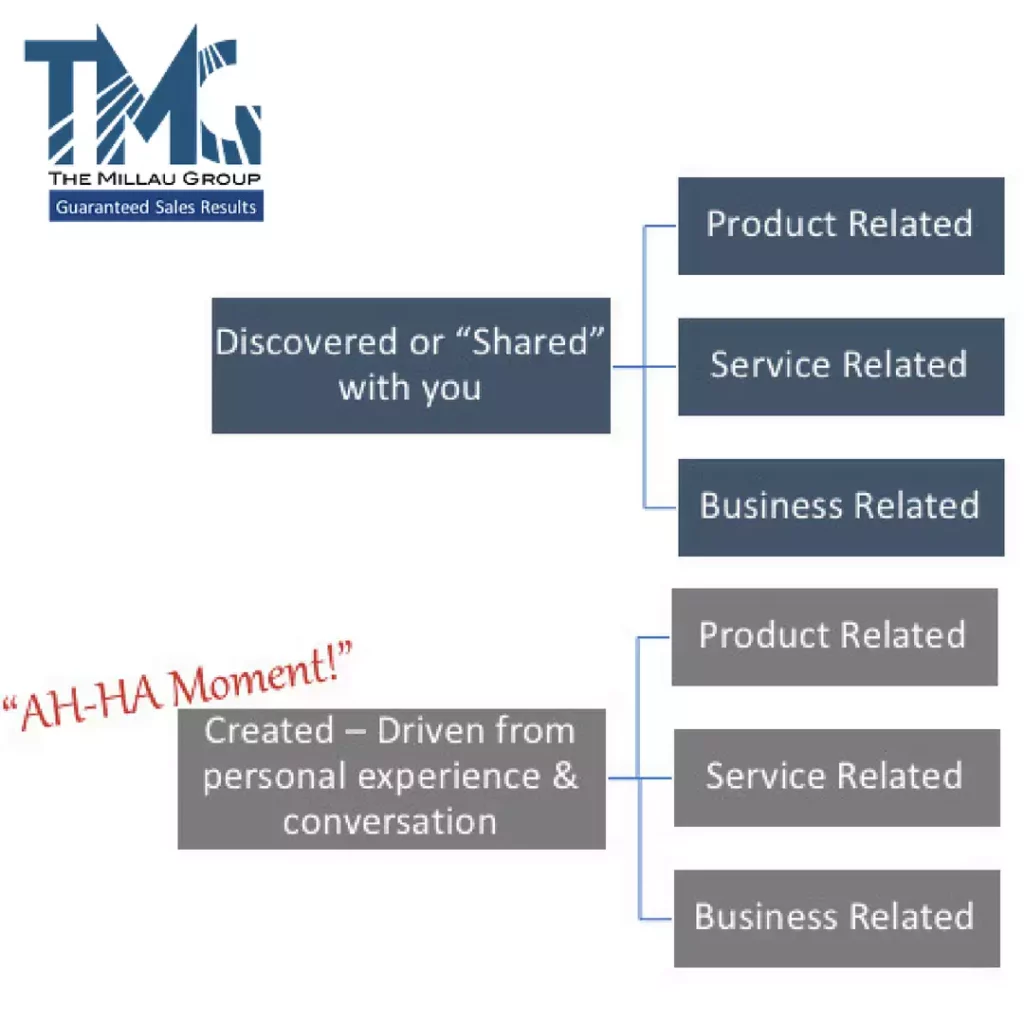Trigger Events: Peeling Back the Layers for Change
Trigger Events are one of the most crucial areas of selling to master. It’s the reason conversations happen and participants come to the table. It’s the reason decisions get made. A Trigger Event can be defined as something causing someone (your decision influencers; Customers & Prospects) to make a buying decision – What compelling event or change is a prospect or customer looking to fix by making a buying decision? It seems simple enough, but why do salespeople seem to struggle in this area when it comes to individual pursuits and key accounts? Simple doesn’t mean easy.
When a prospect or customer experiences a reason for a change, it isn’t always negative, and there isn’t always a “problem” to be solved. There could simply be a better way of doing things, but the goal is to identify how inefficiency is creating a problem in the individual’s world and ensure it’s a priority for everyone.
Trigger events stem from two types of conversations:
A. Decision Influencers are aware they have a reason for a change and share it with you through conversations. Your meets have been productive, your timing is right, and they have acknowledged that a Trigger Event exists and their vision for results is clear. Don’t expect the “reverse-cold-call” here; meaning don’t expect your phone to be ringing off the hook with people who want to buy from you. It’s more likely that your conversations with prospects or customers move forward quicker and you can clearly identify what success looks like.
B. You’ve helped one or more decision influencers create or have an “ah-ha” moment where something in their role or business needs to change in order to meet their goals. You’ve created a Trigger Event. Salespeople can create one by helping their audience understand ways they will be impacted by change. In 2018, digital and social marketing makes claims that buyers are 57% of the way through their decision before engaging in conversations (CEB). How many pipeline opportunities end in success because a salesperson created or helped their audience realize there was a priority for change? That metric isn’t measured because marketers don’t know how to; neither do most sales teams.
People “don’t know what they don’t know” and you can help them discover reasons for change. I witnessed a 2017 conference keynote speaker tell a B2B audience that “closing rates don’t matter anymore because marketing has gotten so good at bringing in ‘buying ready leads.’” – If that’s the case, fire your salespeople and watch what happens to sales. That individual had made his success in the B2C market with a luxury home accessory. That claim doesn’t take into consideration letter B at all. (end of rant)
Now that we’ve either A) identified a shared Trigger Event through conversation, or B) created one, we can categorize the area where you can have an impact with these subcategories.
I. Product(s) – The Trigger Event is driven by a product issue or opportunity to change in order to improve. Comparing your product to another, if they already use something you sell, is never easy. I’ve never heard a salesperson say “yes! I’d love to be compared to my competition!”… But we’re not just talking competition here. You’ve established through route A or B above that there’s an issue your Decision Influencers want to solve and something about your product can solve it.
II. Service(s) – The Trigger Event is service related. If you sell a service, consider that your product, and this category anything that supports the success your customers could have. Typically customer service requests, shipping, billing, and housekeeping duties fall under this area. However, many organizations differentiate with their processes in the marketplace. Just make sure you’re competition can’t say the exact same thing.
III. Their Business – The Decisions Influencers have a business issue that you can solve through product, service, or an alternative value-add that would make them want to make a change. This area comes with more difficulty for most salespeople simply because most salespeople have never operated or led a business before, so their thinking is more product or ground level related. If you help them make a change, how is the top of the organization impacted? How leadership be more successful if (________) is different? These types of questions are rarely asked.
These events are not exclusive. Many times an issue within a product category can be impacting the business. It’s also an advantage for salespeople to create or identify multiple trigger events to be more influential with multiple decision influencers who are impacted by change.
Now we need to get to root cause. Many salespeople think they have a Trigger Event based on surface requests or what the Decision Influencer is willing to share based on surface level questions. For example:
“They are looking to consolidate suppliers for a better price.”
“They want a new display put into their downstream customers.”
“They are putting out a 3-year contract RFP and want us to participate since we’ve worked with them before.”
“Their previous suppliers are letting them down in service. Let’s put together a presentation.”
“Their using ABC’s product and ours is superior.”
“They are expanding into a new territory.”
None of these would be scored “yes” as the Trigger Event for change. What’s causing each of them? Did they realize there was a need for change or did someone help them? An easy “gut check” to your answer is to ask yourself “what does success look like and how will they measure it?” If you don’t know the answer, you don’t know the Trigger Event yet. You may be on your way, but peel back the layers further. Based on our conversations, we at TMG have seen it’s at least 3-4 layers of “why” before the true reason for change is exposed.


